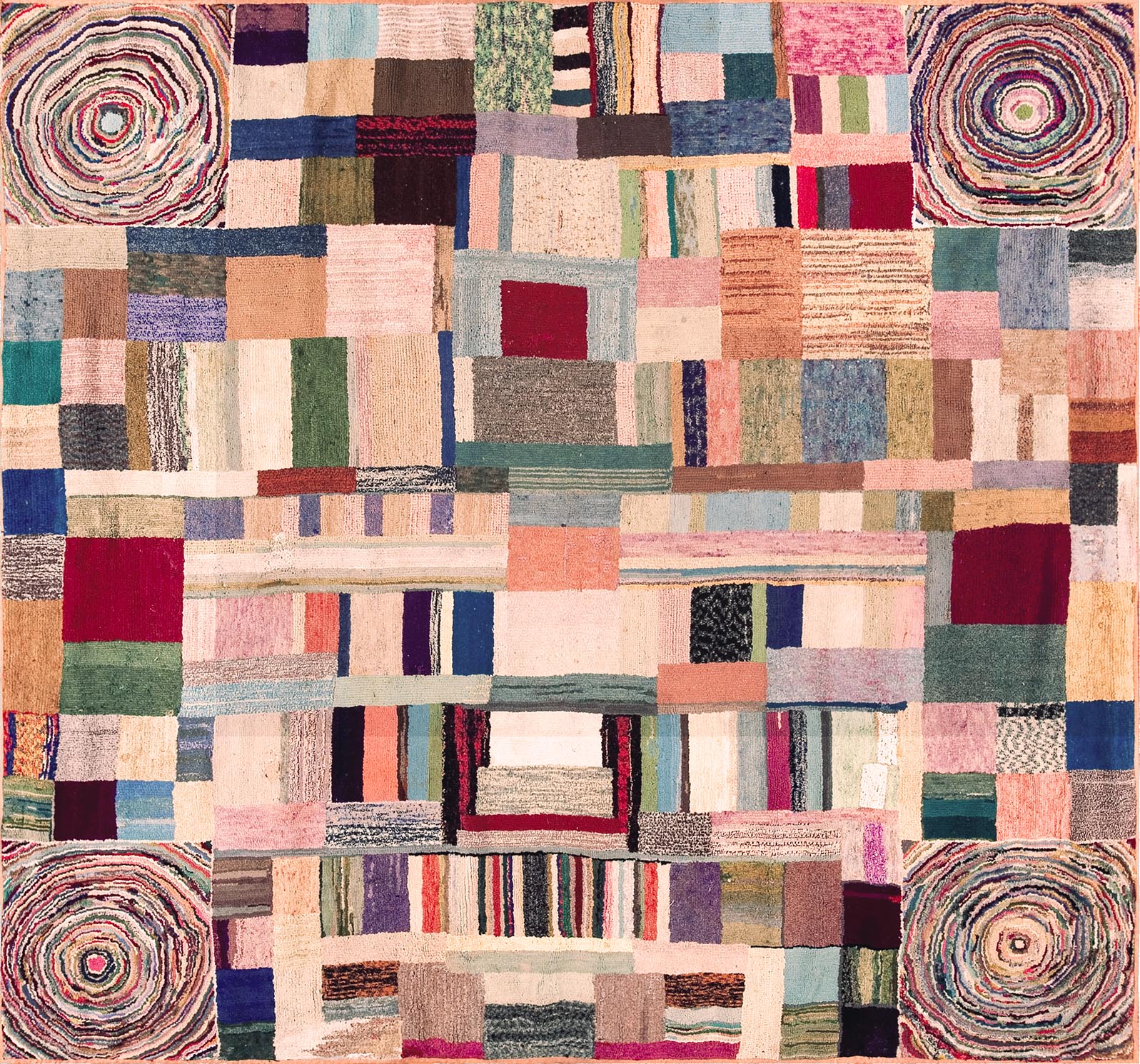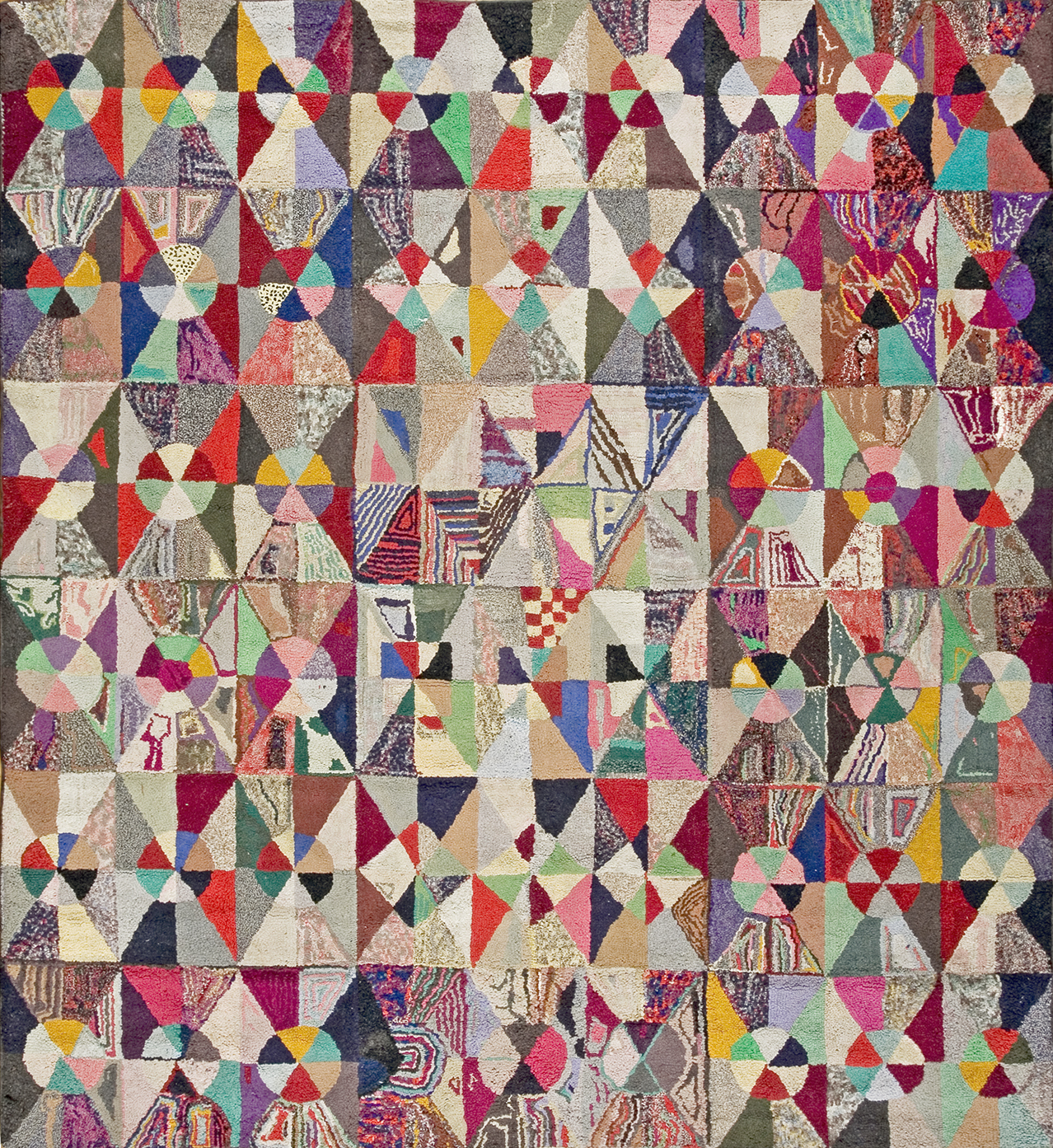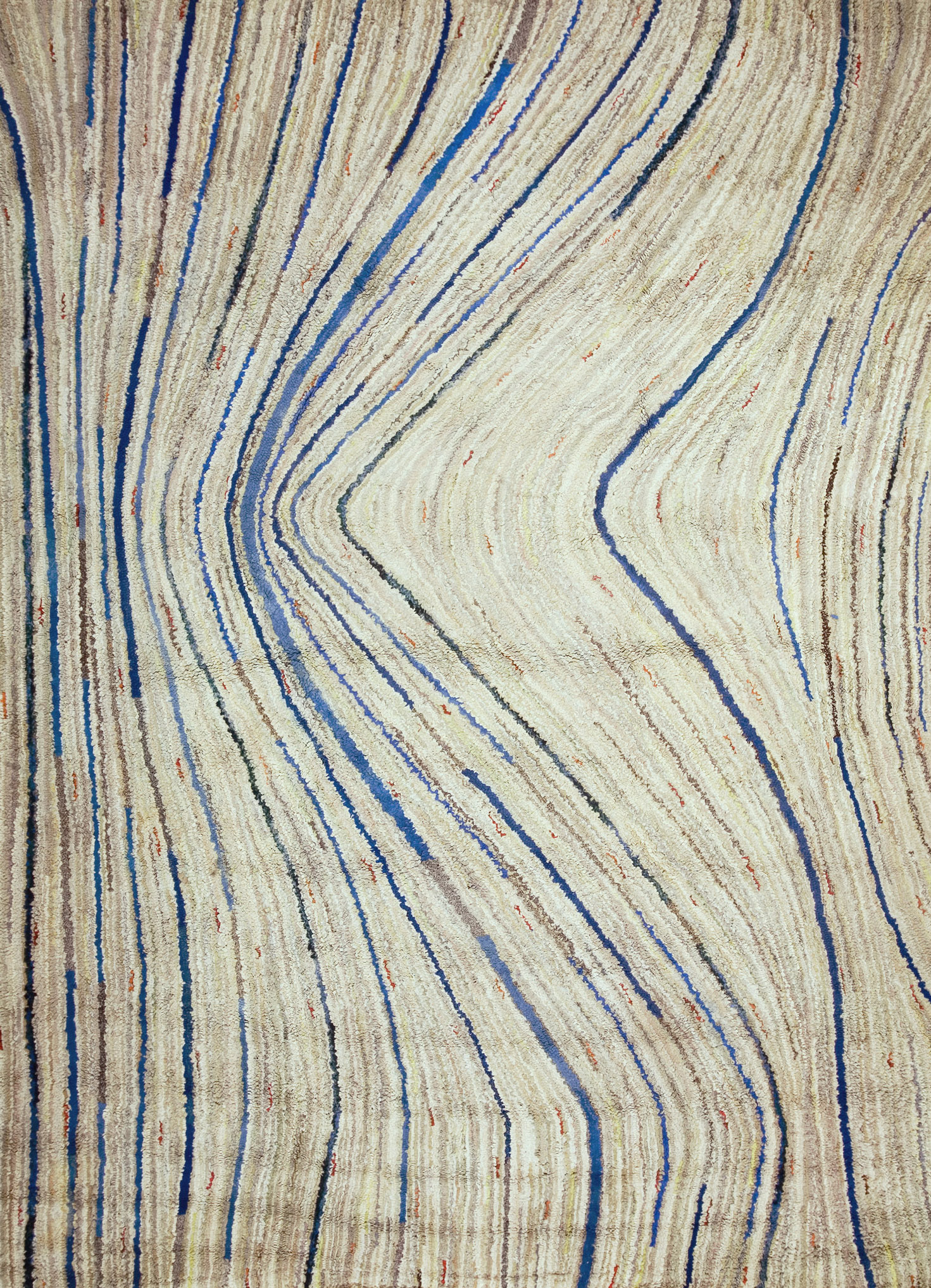While the technique of pulling a loop of fiber through a woven foundation has likely been practiced since the earliest creations of textiles, the hooked rug as we have come to know it today is an art form which is uniquely American – a craft who’s development is attributed to the Canadian Maritime Provinces and the Northeastern United States.
While 18th century America saw mostly barren floors, especially among the poor, sociopolitical changes happening during the early 19th century made way for the craft of hooking to grow into a tradition which covered ground in even the poorest of homes.
The most major historic change in regards to the making of hooked rugs was the practice of product sacking – used for imported coffee, tea, grain, tobacco, etc. coming in from the West Indies. Made in burlap (a woven fabric made from natural fibers such as jute), the sack material would be salvaged from it’s original purpose and used as the foundation for hooked rugs. As the weave structure was wider than materials previously available, pulling strips of fabric through this foundation was now an easy process. Widely available in many areas, very strong when new, and cheap (if not free), burlap made it possible for people from lower economic classes to create hooked rugs which emulated the floor coverings of the upper class for little or no cost (with use of fabric from old and worn out clothing or household linens, or remnants from textile mills).
In 1868, Edward Sands Frost of Biddeford Maine saw the growing popularity of the hooking craft, and made the first pre-stamped patterns on burlap. As demand for this product grew, and free hand drawing became rather labor intensive, Frost began to print the designs from stencils, and by 1870 he was printing them in color. While the standardized patterns removed some of the creativity from the process of hooking, every creation would be somewhat different based upon the materials available to the creator. Also, many hookers would personalize the patterns by adding their own design elements.
With the Industrial Revolution well under way in America, and the trend for more creation, completed faster and cheaper came the deterioration of the art, and by the end of the 19th century the popularity of the hooked carpet was on the decline.
In the early part of the 20th century, in some areas of the American northeast and Canada, small cottage industries began to arise with the purpose of supplying better made and designed rugs to a growing middle class. These businesses also aimed to help poorer people with seasonal work (such as those in fishing communities) to earn much needed cash in their off seasons by making hooked rugs.
With the rise of these cottage industries, the homemade rug went out of style until a resurgence of interest in the 30s and 40s – largely in part to the work of William Kent (an architect and hooked rug authority). He felt that old rugs should be preserved as art to be hung, while new rugs should be produced for floor coverings. He also published three books which promoted appreciation for the early hooked arts and promoted production of new pieces using improved designs from those of the late 19th century.
While in the past any type of spare fabrics were used for rug making, in the first half of the 20th century wool became the more popular material due to an improved standard of living and an increase in income for the growing middle class. Wool was now being purchased and dyed specifically for rug making.
Interest in hooking declined once again in the 50s and 60s as styles changed, but was recognized as a valid form of art at the 1974 rug show at the Museum of American Folk art in NYC.
With designs ranging from whimsical, abstract, and geometric to floral, folky, and pictorial, antique American hooked rugs can be a worthy conversation piece for your collection.
Like quilts, hooked rugs have always been a form of creativity and expression in the craft of utilitarian items. Traditionally, they are a physical record of the life of the maker – containing a literal closet full of information about the life and status of the weaver.
19th C. CANADIAN RUG RHYME
I am the family wardrobe, best and worst of all the generations from the first,
Grandpa’s Sunday-go-to-meetin’ coat,
And the woolen muffler he wore at his throat;
Grandma’s shawl, that came from Fayal;
Ma’s wedding gown, three times turned and once let down,
Which once was plum but now turned brown;
Pa’s red flannels, that made him itch;
Pants and shirts; petticoats and skirts;
From one or another, but I can’t tell which.
Tread carefully, because you see, if you scuff me.
You scratch the bark of the family tree.
Today there are still companies (such as our sister company, The New England Collection) which focus on creating new production designs of this classic art form – paying homage this woven craft which tells the story of a resourceful people who let nothing go to waste.



































